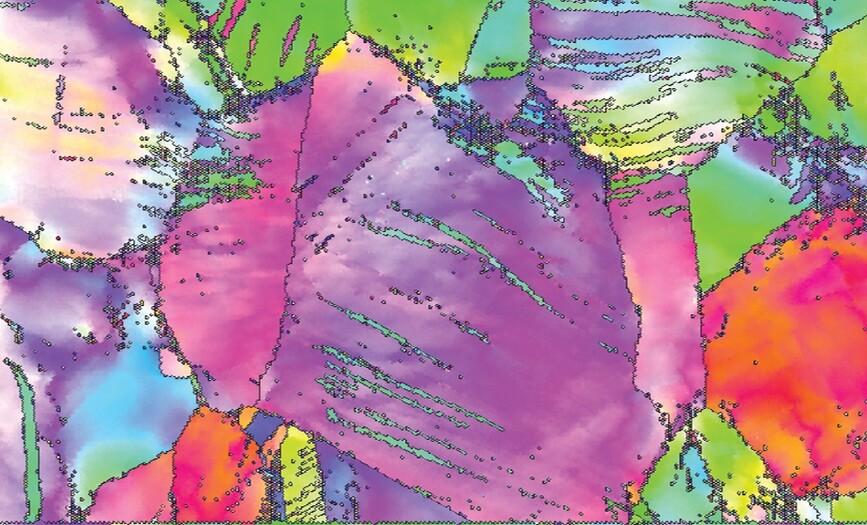An outstanding example of this alloy class, a CrMnFeCoNi alloy in equiatomic composition, has been investigated with a focus on the mechanical properties in an International collaboration between researchers of the Erich Schmid Institute, the U.S. Department of Energy (DOE) Lawrence Berkeley and Oak Ridge National Laboratories (Berkeley Lab and ORNL). Despite the different crystal structure of the single elements the alloy disobeys the well-established Hume-Rothery rules and crystallizes in a single phase, face-centered cubic structure.
The mechanical properties have been found to be exceptional. The strength of the material increases by lowering the temperature from room temperature to cryogenic temperatures drastically. This trend is usually only found in body cubic centered structures and some further exceptions. More striking, the ductility of the material increases and the damage tolerance, i.e. fracture toughness, remains constant or even increases by single measures when the test temperature is lowered. The increase in ductility and fracture toughness could be related to the formation of nanotwins at low testing temperatures serving as an additional deformation mechanism that keeps the work-hardening rate high and suppresses strain localization and failure.
Such an alloy could be ideal for cryogenic applications, such as storage tanks for liquefied natural gas, hydrogen and oxygen. This work represents the first study that characterizes the fracture toughness properties of this novel class of alloys, which are spectacular.
The results could be published in Science, a weekly multidisciplinary journal with about 570,000 readers per week.
For further details see:
A fracture-resistant high-entropy alloy for cryogenic applications
Bernd Gludovatz, Anton Hohenwarter, Dhiraj Catoor, Edwin H. Chang, Easo P. George, Robert O. Ritchie
Science 345, 1153 (2014);
DOI: 10.1126/science.1254581
